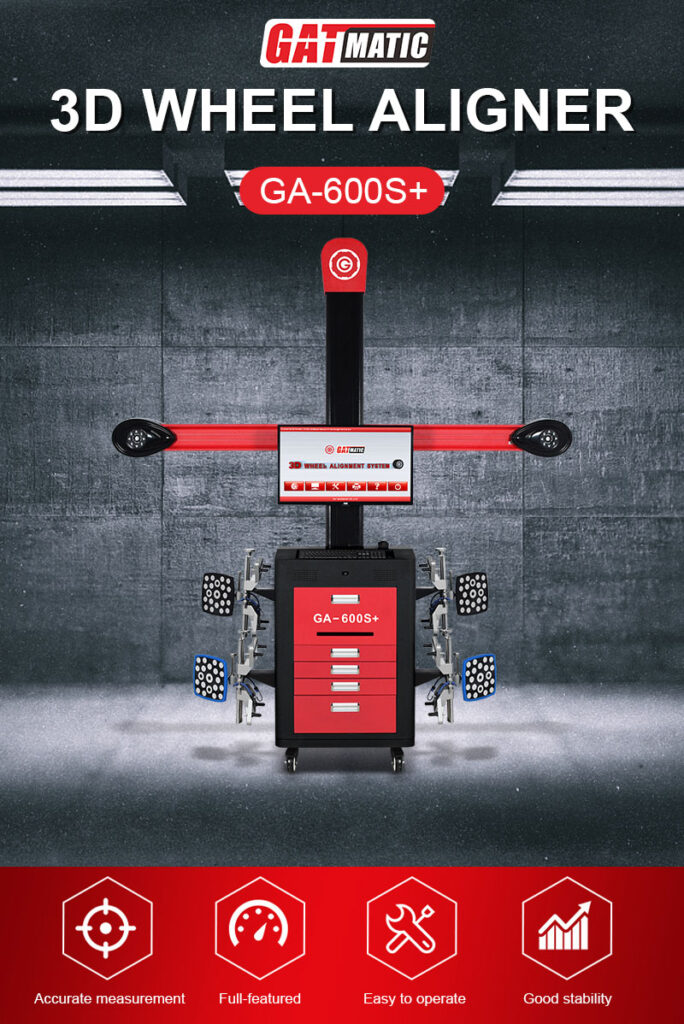Visualizing Precision: Exploring 3D Imaging in Wheel Alignment
Wheel alignment is a critical aspect of vehicle maintenance, ensuring optimal tire performance and longevity. The pursuit of precision in wheel alignment has evolved over the years, with technological advancements playing a crucial role. In this essay, we explore the paradigm shift brought about by 3D imaging technology in the realm of wheel alignment, delving into its principles, advantages, and potential impact on the automotive industry.
I. Basics of Wheel Alignment
To appreciate the significance of 3D imaging, it is essential to understand the basics of wheel alignment. Parameters such as toe, camber, and caster play pivotal roles in determining a vehicle’s alignment. Traditional methods, including string and laser alignment, have been the go-to solutions, but they come with inherent limitations, especially in achieving three-dimensional precision.
II. Introduction to 3D Imaging in Wheel Alignment
Enter 3D imaging technology, a revolutionary approach that transcends the constraints of two-dimensional methods. This technology relies on advanced cameras and sensors to create a comprehensive, real-time visualization of a vehicle’s alignment. Unlike traditional methods, 3D imaging offers unparalleled accuracy and precision, opening new avenues for enhancing the overall alignment process.
III. Components of 3D Imaging System
The core of 3D imaging in wheel alignment lies in its sophisticated components. High-resolution cameras and sensors capture minute details, while powerful computer software processes the data, generating a detailed 3D model of the vehicle’s alignment. The integration of this technology with alignment equipment marks a transformative step forward in the field.
IV. Benefits of 3D Imaging in Wheel Alignment
The advantages of 3D imaging are manifold. Enhanced precision ensures that every nuance of the alignment is captured, leading to more accurate adjustments. The process becomes time-efficient, reducing the time a vehicle spends in the service bay. The user-friendly interface empowers technicians to navigate and interpret data effectively, minimizing the risk of human error.
V. Case Studies
Real-world applications demonstrate the success of 3D imaging in wheel alignment. Case studies reveal not only the improved precision but also notable performance enhancements in vehicles. The cost-effectiveness and return on investment for businesses adopting this technology underscore its practical value in the automotive industry.
VI. Challenges and Considerations
While the benefits are undeniable, challenges exist. Initial setup costs may pose a barrier to entry for some businesses. Maintenance requirements and the need for technician training are additional considerations that demand attention. Addressing these challenges is crucial for the widespread adoption of 3D imaging technology.
VII. Future Trends in 3D Imaging for Wheel Alignment
Looking ahead, the future of 3D imaging in wheel alignment is promising. Emerging technologies promise even greater precision and efficiency. The integration of 3D imaging with autonomous vehicles presents exciting possibilities, aligning with the broader trends in the automotive industry.
Conclusion
In conclusion, 3D imaging technology has emerged as a game-changer in the pursuit of precision in wheel alignment. Its ability to provide comprehensive, real-time data not only enhances accuracy but also streamlines the alignment process. As the automotive industry continues to evolve, the adoption of 3D imaging in wheel alignment is poised to become a standard practice, ensuring vehicles’ optimal performance on the road. The journey into precision continues, guided by the lens of 3D imaging technology.
Get Access Now: https://www.gat-matic.com
FAQs
1. What is wheel alignment, and why is it important?
Wheel alignment refers to the adjustment of a vehicle’s suspension components to ensure the wheels are perpendicular to the ground and parallel to each other. Proper alignment is crucial for optimal tire performance, fuel efficiency, and overall vehicle handling.
2. How does traditional wheel alignment differ from 3D imaging technology?
Traditional methods, like string or laser alignment, operate in two dimensions and have limitations. 3D imaging technology employs advanced cameras and sensors to create a comprehensive, real-time 3D model of a vehicle’s alignment, offering superior precision.
3. What are the key parameters in wheel alignment, and how do they affect vehicle performance?
Toe, camber, and caster are critical parameters. Toe influences tire wear and straight-line stability, camber affects tire wear and vehicle handling, and caster influences steering stability and returnability.
4. What are the advantages of 3D imaging in wheel alignment over traditional methods?
3D imaging provides enhanced precision, real-time data visualization, and a comprehensive measurement of a vehicle’s alignment. It is more accurate and efficient compared to traditional two-dimensional methods.
5. How does 3D imaging contribute to time efficiency in wheel alignment?
The technology’s real-time data processing and visualization capabilities streamline the alignment process, reducing the time a vehicle spends in the service bay and improving overall operational efficiency.
Describe Your Needs In Detail!
We will carefully evaluate your needs and give professional solutions.



